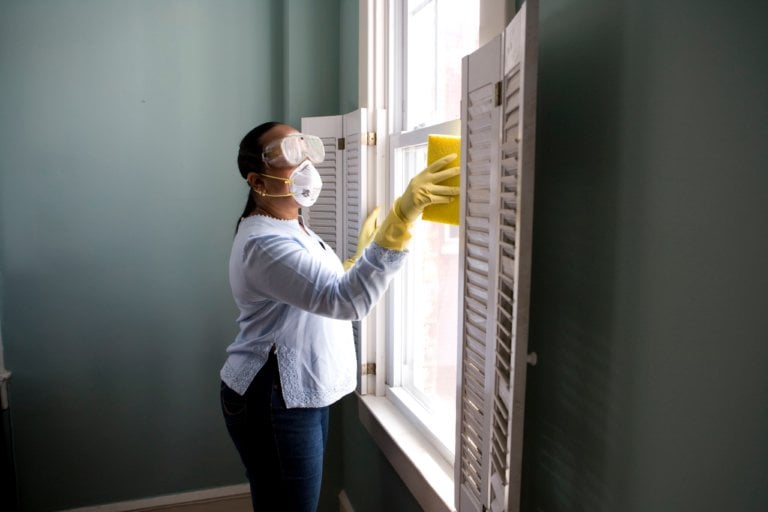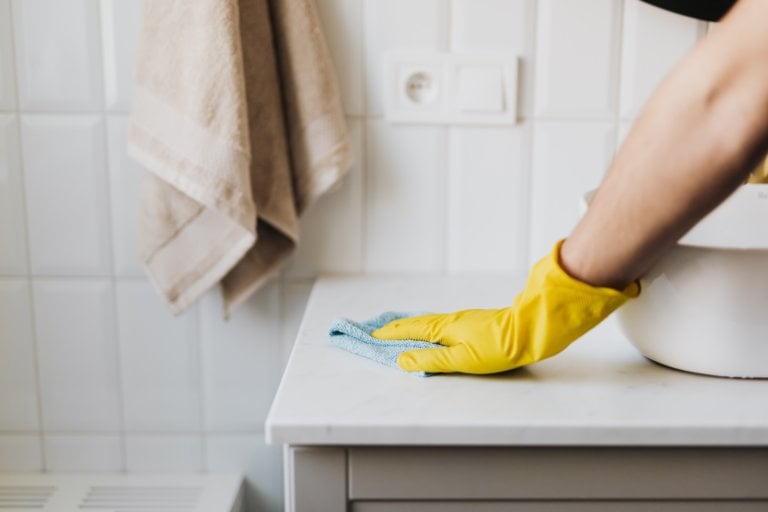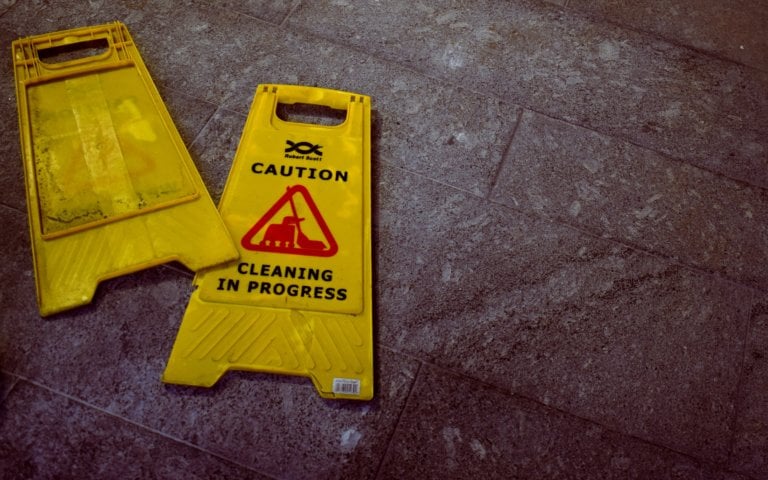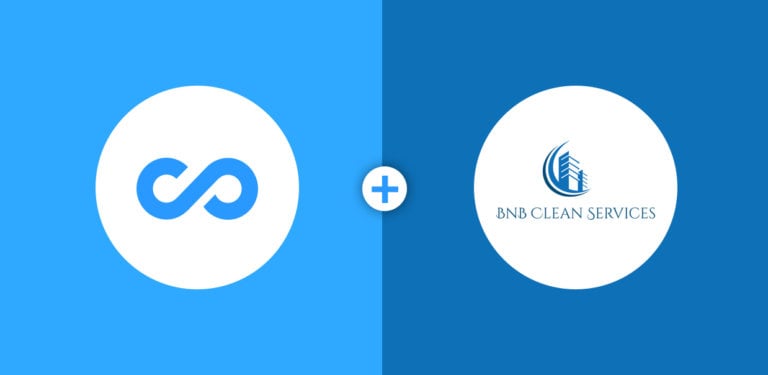Training your your cleaning staff is the key to ensure they perform their jobs perfectly. Read on to learn more about the importance of cleaning staff training and how to do it properly.
When running your own cleaning business, you need to train your staff so that every individual can work independently and provide your clients with quality service.
Let’s break down the importance of proper cleaning business training so your staff execute the job to perfection and 10 tips for proper training. This can apply to any cleaning service, including house cleaning, disinfection, or laundry cleaning.
Why You Need Training For Cleaning Staff
If your cleaners are untrained, then they are risks to themselves, to others, and to the surface materials around them. Not to mention that they will ultimately waste time and product, and you’ll have some unsatisfied customers.
Apart from safety, training for cleaning staff is critical to establish better cleaning practices and standards, and can even contribute to reduced labor costs.
However, employees who don’t have proper or effective training end up costing the company more than just money. Poor training results in poor customer experiences, higher rates of errors, and low-quality work.
Another thing to keep in mind is that employees want proper training. In fact, 74% of workers are willing to learn new skills or re-train in order to remain employable.
So, if you’re looking to save on labor costs, have less turnover, more satisfied customers, and a competent team, you must know how to properly train your staff from the moment they set foot in your door.
We gathered the best and most effective tips on how to train cleaning staff so you can be sure your team is delivering exceptional customer service and repeat business.
Download your FREE guide on “6 Pillars for Improving Frontline Employee Retention” ⤵
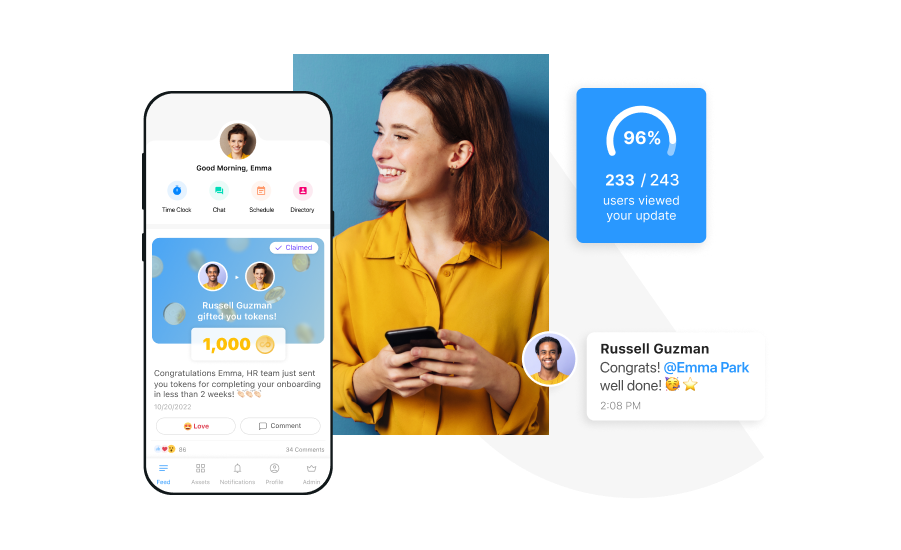
10 Tips on How to Train Cleaning Staff
Training for cleaning staff requires a multifaceted approach. To create the most effective training program for your cleaning company, each staff member needs to learn about the company’s requirements, culture, expectations, as well as the specifics of how to perform their jobs.
Here’s a list of our 10 expert tips on training your cleaning staff.
Use an employee training app for the best results
If you’re still running your company with pen and paper or endless Excel spreadsheets, you’re open to countless human errors and unnecessary costs due to those mistakes.
Some points to keep in mind when making the switch to a digital onboarding and training app:
- All information is readily available: Cleaners want digital training because it keeps important information easily accessible in one centralized location.
- Digital training is time effective: No one wants to spend time sitting in one room for an all-day training session.
- It’s flexible: It’s a more flexible way to learn, as it’s done on employees’ own time and they can complete the training at their own pace.
- You can create interactive and customized courses. Create customized training courses for your staff that they can complete right from their phones. Include any file formats you need, digital badges, and
This is exactly why so many cleaning companies are turning to digital onboarding and training processes.
Take Connecteam, for example. This all-in-one employee training software helps managers and owners of cleaning companies ensure that employee development and training are efficient and quick.
Digital training is used to reach every single cleaner from one single place, no matter where they’re located. Employees don’t need to print or download any materials and you’re able to keep track of their progress and complete training on subjects including:
- Health and safety training
- Proper use of hazardous materials
- Equipment usage
- Maintenance of equipment and resources
- Knowing how to perform cleaning in restroom care, carpet care, general office cleaning, etc.
You can also set deadlines for training programs, see who hasn’t completed their courses in time, and send your cleaners reminders and notifications to ensure that no important knowledge falls through the cracks.
Additionally, you can create a full knowledge center for safety resources available at the click of a button. This allows your cleaning crew to immediately get answers to questions so they don’t have to chase after you with countless text messages or phone calls.
Train Your Cleaning Staff Effectively With Connecteam’s Courses
Give your cleaning staff all of the training resources and skills they need to execute their job to perfection
Onboard before you train
Onboarding is the first step of any professional training program and shouldn’t be overlooked. This initial training period provides an overview of company requirements and expectations, the company culture, and daily tasks.
This is important so new employees have clarity and a firm understanding of what’s to be expected of them in their new roles. It also weeds out employees who aren’t a good fit for the company before you invest in their training.
With Connecteam’s employee onboarding app, you can administer the onboarding process to new cleaners quickly and efficiently so they can be brought up to speed in a timely manner.
💡 Pro Tip:
For your cleaners to get the most out of the onboarding experience, take advantage of customized onboarding courses and quizzes in the Connecteam app. You can even include introduction videos from the CEO or a longtime employee to make your new employees feel welcome – all while your cleaners are on the go.
To learn more, check out our article: The Ultimate Guide to a Successful Employee Onboarding Process in 2023
Utilize microlearning for better retention
Gone are the days of long, lengthy, in-person training sessions. Not only are they difficult to coordinate, but they’re expensive and downright ineffective.
The most impactful training is administered in short, bite-sized segments. Why? Because employees are much more likely to retain information when it’s presented in shorter pieces.
This training method is called microlearning, which involves presenting short chunks of information through multiple mediums, instead of long, drawn out training sessions. Using bite-sized modules and multiple mediums like videos and quizzes help your staff retain information better, keeps them engaged, and prevents them from getting bored.
🧠 Did You Know?
With Connecteam, you can create and deliver your own customized mobile training courses and centralize all learning materials into one digital space.
Keep it interactive
To keep your employees engaged throughout the training process, be sure to include interactive elements in your training courses, like videos, quizzes, and digital badges.
Videos are especially useful for retention. In fact, the human brain processes visuals 60,000 times faster than it does text, so videos are a great training tool!
Here’s an example of how you could structure a section of a course:
Let’s say you want to teach your trainees about the most important cleaning products, how they work, and on which surfaces they work best.
Instead of simply listing the information, you could include a short video of a longtime employee describing their experiences with each product. Have them describe tips and tricks to using them that would be useful for a new employee.
Then, include a short, colorful presentation describing each product and what they do. Finally, add a multiple choice quiz to test new employees on their new knowledge.
Just a few minor changes to traditional training can help your employees learn (and work) better!
💡 Pro Tip:
You don’t need fancy cameras or a film crew to create training videos. All you need is your smartphone camera, and you’re good to go! Take a quick video of an experienced worker demonstrating a process or of your CEO explaining the company culture. Then, within seconds, upload it to Connecteam’s training app to create enjoyable and interesting training content for new employees.
Take advantage of forms and checklists
With so much to learn, new employees may feel overwhelmed. However, checklists are a great way to help your cleaning staff manage their training and keep track of their progress.
Include training checklists in each module and store them directly in your employee training app. Each checklist can include information and processes they’re supposed to complete in that module, allowing them to check each off as they go.
Forms are another tool you can use to guide employees through their training. For example, use forms to gather feedback on training to see how employees feel about it and what they would change.
Here are some other ways forms and checklists can help build your in-app training process:
- Checklists to guide trainees, such as a “New Employee Checklist”
- Include real, on-the-job checklist examples to show trainees what they’ll need to do during each shift.
- Forms to gather personal information, from contact info to food preferences
- Background and security check compliance forms
- Employee uniform order and agreement forms
💡 Pro Tip:
Take advantage of these free downloadable checklists to ensure your staff complete all their tasks:
- Cleaning Supplies Checklists
- Monthly Cleaning Checklist
- Spring Cleaning Checklist
- Checklist for House Cleaners
- Basic Cleaning Checklist for House Cleaning Companies
Use Connecteam’s Checklists to Train Cleaning Staff and to Gather Information Directly from the Field
Create an employee handbook and refer to it often
Creating an employee handbook can be helpful for training your cleaning staff because they can refer to it at any time if they have questions or concerns.
Try to keep it short, to the point, and updated regularly.
If you’re using Connecteam, then you can upload the employee handbook directly to the knowledge base so your employees can refer to it in real-time, whenever they need it.
Make sure to include the following in your employee handbook:
- Company history
- Company mission, values, etc.
- Company hierarchy & contact information
- HR procedures like calling in sick, requesting time off, etc.
- Payroll information
- Review of key training components
- Health and safety
- Potential damages management
- Employee expectations, code of conduct, etc.
- Dress code
- Resignation and termination
Regularly update the employee handbook and add material as needed.
Keep the lines of communication open
When your cleaners are training from the field, it can make communication more difficult. However, it’s important they know that you are always available for questions and that your job is to professionally guide and support them.
Fortunately, training apps, like Connecteam, come with in-app chat so the lines of communication are always open. This not only makes it possible for employees to reach you directly anytime, but it supports a healthy work-life balance by keeping work and personal messages separate.
New workers have the freedom to reach out to you with training questions throughout their work day, and you can check in with them via instant message. You can also create group chats if you want to address multiple employees at once.
In addition, all employees’ personal contact information is in the employee directory, so they can call or email their colleagues if needed.
Train on customer service
Soft skills are positive and strong personality attributes that allow your workers to form relationships with clients and better perform their jobs.
While it can be challenging to train soft skills to your cleaning crew, you can encourage emotional intelligence and “people skills” on your team.
Don’t solely focus on performance metrics when training for cleaning staff. Instead, motivate and encourage your cleaning staff to build personal connections with clients. No, your team doesn’t need to know the customer’s entire life story. However, ensure your team can be sensitive and attentive to your customer’s needs and expectations to help ensure repeat business.
Soft skills include many of these traits:
- Communication skills
- Creative thinking
- Work ethic
- Adaptability
- Teamwork
- Decision-making
- Positivity and motivation
- Problem-solving
- Time management
- Conflict resolution and flexibility
In addition to soft skills, your cleaning job training should cover tactics on how to offer exceptional customer service, including:
- Taking notes on client preferences and sharing them with the team
- Having answers to common customer questions (an FAQ section in your training app comes in handy here)
- Quickly responding to phone calls or requests from customers
- Allow time gaps between jobs to minimize arriving late or needing to leave early for a cleaning job
- Wear the proper uniform
- Have all necessary tools and equipment (along with backup)
Train staff to deal with potential damage
Even professional cleaners have accidents, so make sure your team is trained to handle them correctly. Whether it’s breaking or damaging a piece of property, your staff needs detailed instructions on how to handle the situation.
Once they let you know about a cleaning accident, they’ll need to inform the client. Ideally, business insurance covers your clients’ property and employees’ safety. And you should make sure that your team has the insurance information on hand.
Ensure your cleaning staff understands how insurance covers them and the customer, and how they can best communicate this to the client, if necessary.
Set high standards for health and safety
Training for cleaners should involve making sure all staff is 100% up to speed on the latest health and safety protocols, including fire protocols. They need to be regularly updated on health and safety standards to ensure they and your customers are safe, and to ensure that your business remains compliant.
You can store all relevant health and safety documents in an online knowledge base so they’re readily available at any time. Storing them digitally also means you can update them whenever you need.
For companies in the United States, OSHA has laid out health and safety topics relevant for cleaning companies:
- Recommended Practices for Safety and Health Programs: Used in a wide variety of small and medium-sized business settings and present a step-by-step approach to implementing a safety and health program.
- Safety Pays Program: Assesses the impact of occupational injuries and illnesses on an employer’s profitability.
- Safety and Health Management Program Guidelines; Issuance of Voluntary Guidelines: Highlights safety and health program management guidelines to prevent occupational injuries and illnesses.
- Elements of an Effective Safety and Health Program: Contains important documents on how to handle toxic materials.
- Business Case for Safety and Health: Provides information on how an effective safety and health program can improve an organization’s productivity and profitability.
The Bottom Line on Training For Cleaning Staff
Cleaning business training is a lengthy yet important process for growing your bottom line and holding on to quality workers for the long term. By investing in a great training program, your staff will have the necessary tools they need to execute their cleaning jobs properly.
Even more so, using an employee training app, like Connecteam, to do this is the most effective way to carry out training for cleaners. You can create customized training courses and quizzes and store all important training materials in one place.
Another tip: Make sure you ask your new hires and even veteran staff for feedback and suggestions about training, onboarding, and development. This will allow you to create the best training program for your business and maintain open lines of communication.
The App to Get Your Cleaning Staff Up to Speed in No Time
Effectively train your cleaning staff, build their schedules, track their time, and instantly reach them from any location with Connecteam.

